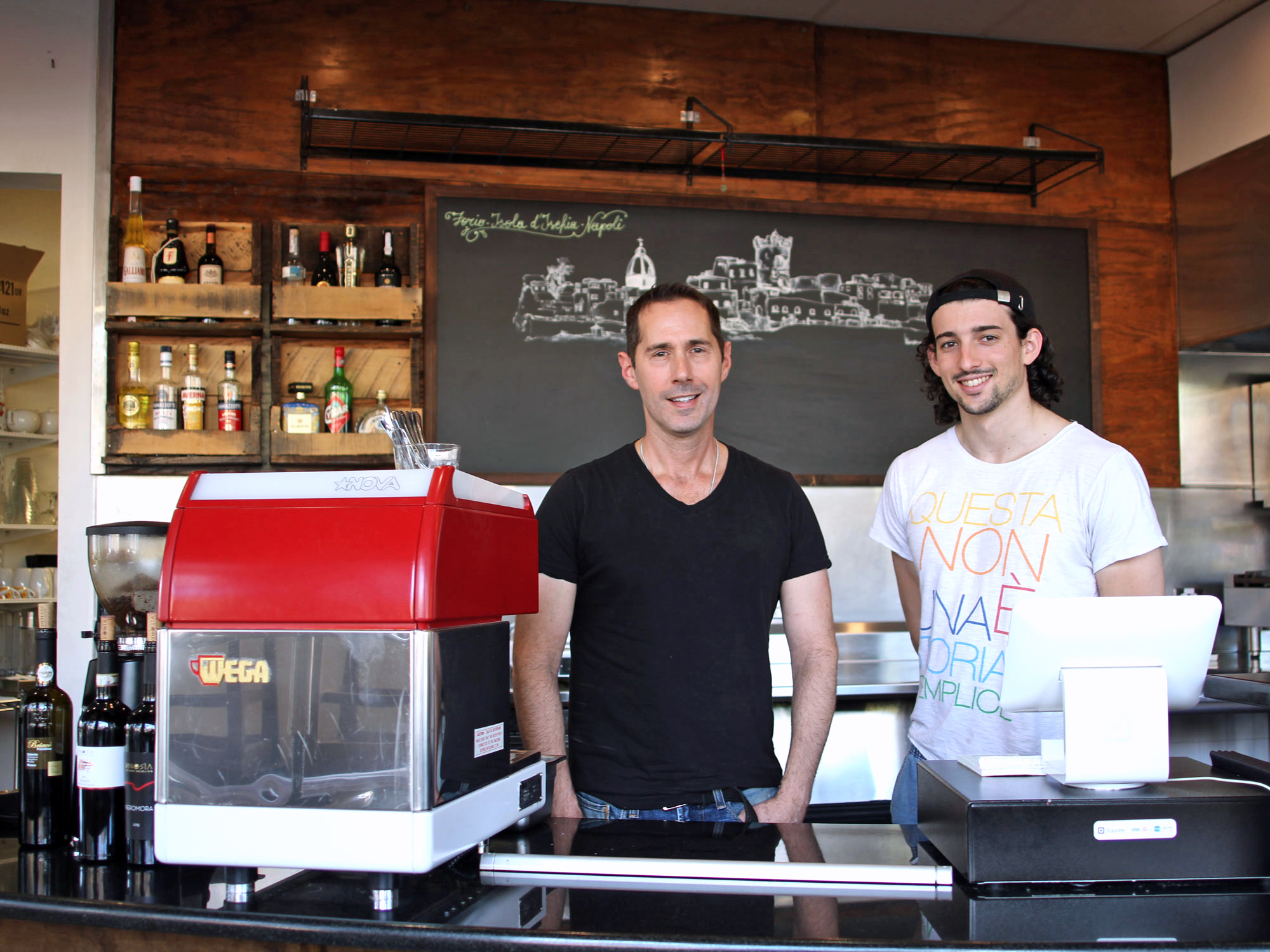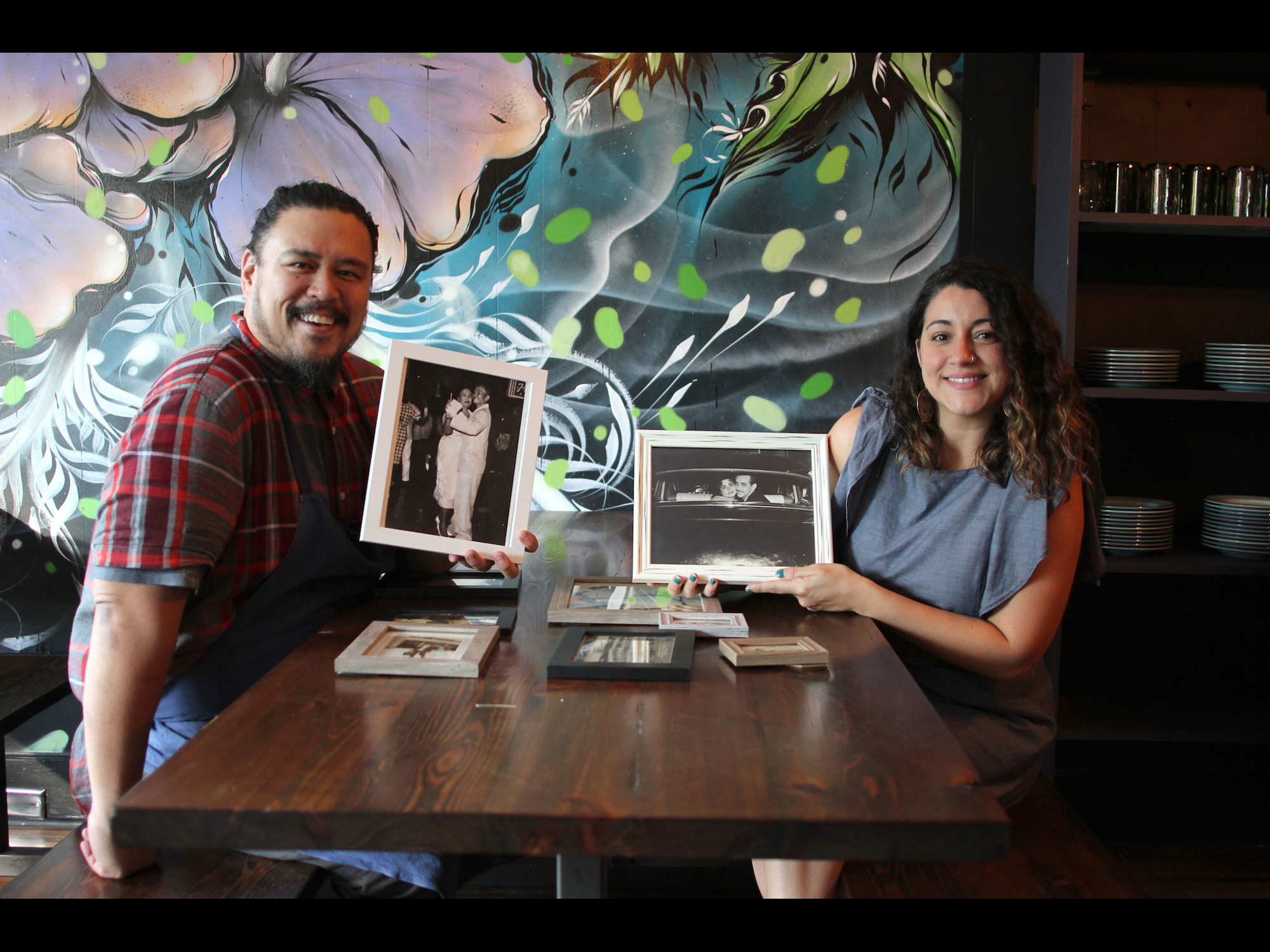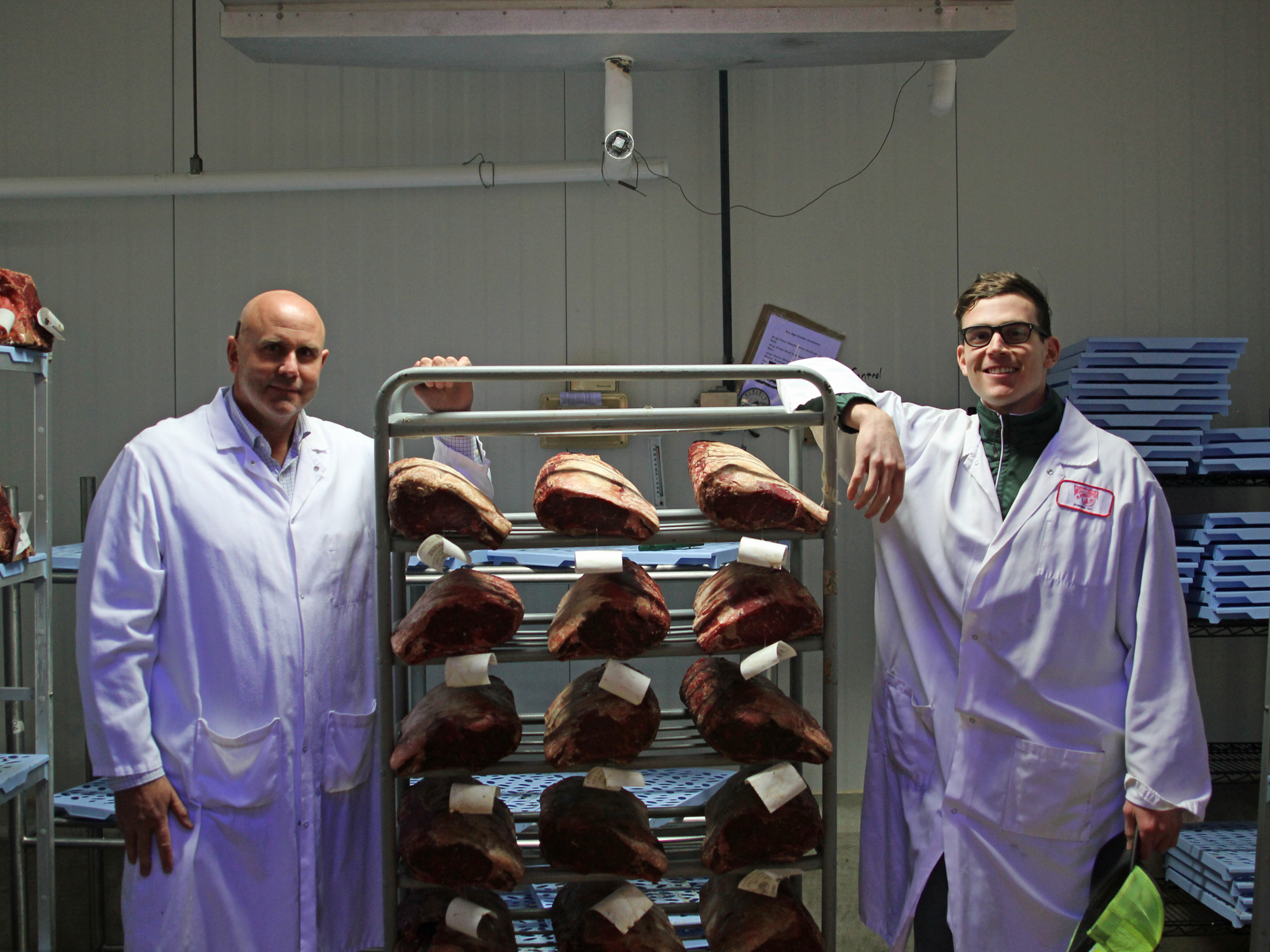YEARS AGO, IN MY LIFE IN ADVERTISING, I worked for the creative director, Bert Gardner, who had invented the “Pork: The Other White Meat” ad campaign. Behind it was a whole industry that, faced with the diet-conscious America of the 60s and 70s, had reconfigured pork production to produce a product as lean as the first white meat, chicken. I honestly can’t tell you if this got people to cook more pork—but it certainly played a role in them overcooking the pork they did buy, because it lacked the fat to keep it moist. Pork, the other dry, flavorless meat, was how many cooks (myself included) looked at it then, and its share of our cooking dropped precipitously, because it just wasn’t that tasty.
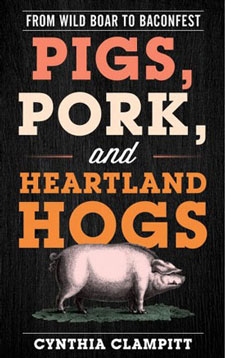
The book
Jump forward a couple of decades and pork is in a renaissance. Who is pork’s leading spokesman in America? Ron Swanson, the caustic libertarian on Parks and Recreation who keeps cured pork products stashed in 38 secret spots around the parks department. Or maybe it’s Homer Simpson, who famously called pigs “some wonderful, magical animal.” Our complicated relationship with pigs and their delicious fat is in a dionysian phase, where bacon represents all that is free and good about America, where food magazines speak unabashedly about something called lardo, and the closest thing to a religious experience to be had is a lavish photo essay on curing pork in a century-old cave somewhere in Italy… or Tennessee.
While hogs are raised all over America, the part of the country that has been most shaped by pork production is the midwest, not least among it the city once known as the Hog Butcher of the World. That history—how the nature of pork production shaped the midwest, from early settlers to the heyday of the stockyards to our present era of bacon festivals—is the subject of a new book by Chicago-based food historian Cynthia Clampitt, Pigs, Pork and Heartland Hogs: From Wild Boar to Baconfest. It comes on the heels of a previous book about corn in the midwest, Midwest Maize: How Corn Shaped the U.S. Heartland, which is fitting since there’s a deep symbiotic relationship between us, the pigs that feed us, and the corn that feeds them. I asked Clampitt to tell us about how pork created our world.
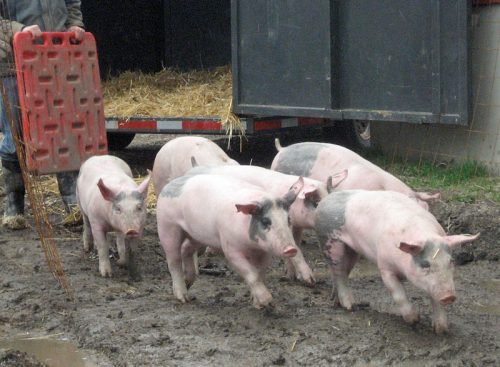
FOODITOR: Let’s go back, like a classroom science film, to the age of the caveman—at least that’s where I assume this all starts. How did humans and pigs become so intertwined as species?

The author
CLAMPITT: The wild boar, Sus scrofa is an extremely opportunistic creature. Long before humans had actually considered domesticating animals, wild boars began following hunters and cleaning up their leavings. Eventually, wild boars began hanging out around human settlements, not only for potentially easy access to food (including food the humans began to intentionally feed them), but also protection from larger carnivores.
This relationship began to morph into what is known as “managed wildlife”—that is, animals that have not actually been domesticated but have become at least partly dependent on humans. It’s impossible to identify a specific where and when domestication occurred, because this was happening all across Eurasia. In addition, the line between domestic and managed was blurry in areas where Sus scrofa domesticus—what we know as the domestic pig—was allowed to forage for food, which tended to make them wilder but also left them open to breeding with wild boars.
As time went by, both humans and pigs became more dependent on one another. Pigs, like their wild-boar ancestors, will eat virtually anything and happily forage anywhere from grassland to gutters to garbage piles. So they’re cheap and easy to raise. And because only rabbits breed faster than pigs, there were always abundant pigs on hand. This offered a considerable amount of food security, as well as political autonomy, to a wide range of people, as civilizations began to develop and diversify.
Plus pigs offered abundant lard, which for most of history, aside from cooking uses, was the only way you could keep the wheels on your cart turning. But even more important, the flesh of pigs could be preserved more easily than that of other mammals, even as others began to be domesticated—and not just preserved, but still taste great. And, as the Babylonians discovered, pigs were also good at finding truffles. So what’s not to love?
Indeed—yet even with an animal that’s so beneficial, we find two of the world’s major religions bar raising pigs and eating pork. Why was that?
There are a wide range of theories on this. Some blame the ability for people to be autonomous. Others point to the fact that the poor relied more heavily on pigs than the rich in some early Indus Valley civilizations, suggesting it was snobbery. I think a more reasonable theory—especially in light of the fact that the Mosaic Law promises health, and not blessings, to those who avoid pigs and other carnivores—is that someone noticed that eating pigs can create problems.
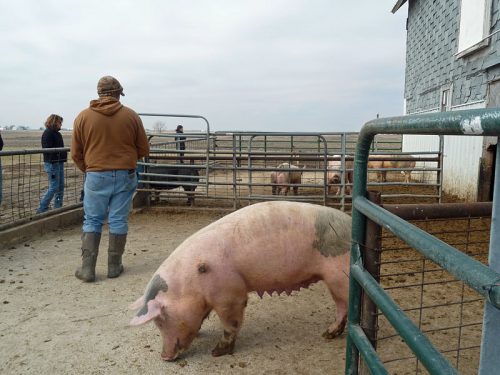
Whether you accept divine revelation or inspired observation, it’s hard to escape the fact that pigs will eat anything, and what they eat obviously affects their taste, and we now know it also spreads disease. Of course, we think first of trichinosis, but there’s also influenza—and we still battle swine flu today. But to underscore the “eat anything” element, they take the “omni” in omnivore to extremes. In addition to almost every plant or root they encountered, they also eat everything else, including worms, shellfish, and snakes, as well as the young of other animals (and sometimes even their own), cadavers, and excrement. It’s not hard to imagine someone making the connection.
And one might think, “if people knew they spread disease, why would they still raise them?” Same reasons they were initially domesticated: they take almost no work and produce a lot of easily preserved protein. And they taste good. Even knowing about trichinosis, in the 1950s in the U.S., most cities used pigs to “process” garbage, and then sold the pork. That was why we used to have to cook our pork well-done. This practice was eventually banned, but it underscores the fact that just knowing something can be a problem doesn’t necessarily keep people from doing it.
Pigs became known as “cornfields on legs,” because you could feed your corn to pigs and then walk the pigs to markets that might be a thousand miles away.
You say that the Midwest grew into one of the world’s great agricultural centers based on two crops—corn and pigs. And since one is the feed for the other, they really make a single agricultural system. How did that develop here?
Possibly the only bit of agricultural information students get in American schools is the fact that corn saved early settlers. Pocahontas and Squanto rescued Jamestown and Plymouth respectively by introducing the newcomers to corn. Though, technically, what they introduced was maize, since “corn” simply means the dominant cereal grain of a region. Hence, it was sometimes called Virginia wheat, though it became more commonly known as Indian corn.
However, corn became more than just a way to survive; it became an integral part of the culture and cuisine of the colonies and then of the U.S. It became so much beloved that Thomas Jefferson planted corn in his garden in Paris while there as ambassador. Americans had come to love corn.
Fortunately, animals also love corn. New Englanders reported that in storehouses with multiple grains, rats and mice always went first for the corn. And pigs love corn. This initially contributed to complicating relations with the indigenous people, as pigs can smell food miles away, and if they smell it, they can find it, and that often included all the corn collected by a people group for the coming winter. But pigs loving corn gave colonists and then Americans an easy way to feed the pigs that were so vital for life.
They were vital for the same reasons they’d always been vital: they are easy to raise, which was absolutely necessary in the colonial period, when workers were far too few to handle more demanding animals; they’re tough, which was important when moving into the Northwest Territory; they multiply rapidly, so if you started with a few, you soon had a lot; and they are easy to preserve. Plus, aside from being an important source of protein, salt pork was the primary source of salt in cooking for most of history.
The reason this created a “system” is that, before trains came along, getting the corn you were growing to market (and everyone was growing corn) was very difficult—unless it walked there. Pigs became known as “cornfields on legs,” because you could feed your corn to pigs and then walk the pigs to markets that might be a thousand miles away. Corn and pigs became so closely allied that the first Corn Palace, built in Sioux City, Iowa, in 1887, did not actually celebrate corn for itself but rather celebrated corn as the thing that made them the leader in pork production. Today, the state that grows the most corn—Iowa—is also the state that raises the most pigs.
Let’s talk about preservation. As you say, many forms of preservation are ancient—salt pork, prosciutto, and so on. There were also new industrial forms of preservation—meat out of cans is relatively uncommon now, though Spam lingers on, but the industrialization of pork as a preserved product played a huge role in the rise of Chicago’s meatpacking and hog-butchering industry.
Well, while it may be less common in many of our lives, meat in cans is not universally uncommon. There are vast-arrays of canned pork products in the stores, both American and international. And the oldest trademark still in use is for Underwood deviled ham. So plenty of canned pork products still out there.
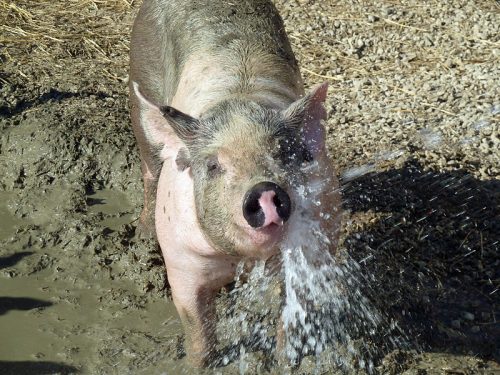
That said, pork packing was not initially in cans. It was salt pork packed into pork barrels. That type of meat packing goes back for centuries. But it was in Chicago that packing moved from barrels to the possibility of shipping fresh meat, once ice harvesting came into play. Ice made it possible to ship huge quantities of meat, rather than driving the animals to market. By 1900, Chicago was supplying 82 percent of all the meat consumed in the country, but by then “packing” had become branded packaging.
However, you’re right that the industrialization of pork played a huge role in Chicago’s rise—though the developments began in the city that was first known as “Porkopolis”—Cincinnati. But after the Civil War, pork processing had definitely made its home in Chicago. Interestingly, one of the developments started in “Porkopolis” and then refined in Chicago had an impact on industrializing Detroit, as well. Pork processors had developed something called the “disassembly line,” which made the processing of a hog stunningly faster than home butchering. You might be able to guess just from the name that this inspired Henry Ford to assemble, rather than disassemble, things quickly.
The mid-1800s saw a big surge in new ideas—the standardizing of cuts, the branding of products, the beginning of automation, and, more than anything else, the speed with which work was done and the ability to move meat to market. The nation’s growing and increasingly successful population demanded huge amounts of meat, and Chicago supplied it. And, because for roughly 2,000 years, pork had been virtually the only meat available to the lower classes of Europe, it was pork that they were looking for. Plus, once again, lard was still the main way one kept machines running, and the Midwest was the biggest supplier of lard in the world. It wasn’t until later in the 1800s that petroleum came into use.
How pork is eaten is an important sign of different cultures and regions in America, and certainly in Chicago. What are the major cultural forms of pig-based cuisine in the Midwest?
In the mid-1800s through to the early 1900s, the influx of immigrants and migrants into the Midwest made this region the most diverse in the nation—and almost everyone who came had long histories of eating pork. German-speaking peoples were the largest initial group, and they made bratwurst and frankfurters so common that few thought of them as being anything other than American. Swedes, Finns, Norwegians, and Danes fancied the upper Midwest. The Irish arrived in large numbers after the Potato Famine in 1850. Enclaves of Dutch and Belgian settlers also arrived in the mid-1800s.
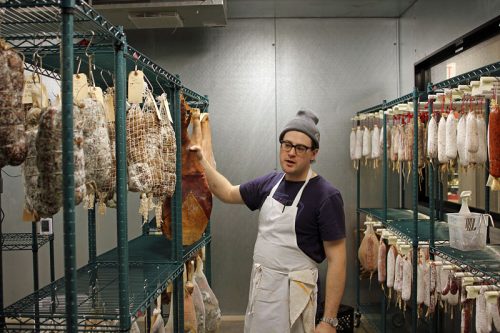
Rob Levitt at The Butcher and Larder, with his charcuterie
The creation of the Transcontinental Railroad in the 1860s, moved a large Chinese population into the region. African Americans migrated into the Midwest after the Civil War. A big wave of Polish immigrants headed for the Great Plains beginning in the 1870s. Between 1880 and 1920, European immigration came increasingly from southern and eastern Europe. Italians, Greeks, Czechs, Slovaks, Hungarians, Lithuanians, Romanians, Serbians, Croatians, and more made their way to the Midwest, though many of them were drawn to the growing cities of the region. By the early 1900s, both Michigan and Minnesota saw large influxes of Mexicans who arrived to work in the sugar-beet fields, though it was the cities that had the greater growth in Hispanic populations.
As a result of this cultural wealth, there is a stunning array of pork-based offerings in the region. We have companies producing great sausages from a dozen different ethnic traditions. Various cuts and roasts and preparations dot the landscape, some very specific to different areas (such as goetta from Cincinnati), a bit more generalized (one thinks of the pork tenderloin sandwich, which is claimed by both Iowa and Indiana), or fairly universal (from hot dogs to pork roast). Wisconsin both produces and consumes the most bratwurst in the nation. Spare ribs, pork chops, prosciutto, tacos al pastor, char siu, and vastly more pork dishes are available because of this influx of different cuisines. The one thing that makes it all Midwestern is the pork.
Pork fell behind beef in 20th century America, certainly behind steak as a prestige meat. It was seen as too fatty for modern tastes, and the whole “other white meat” campaign came out of trying to position it as lean, which unfortunately also meant people only ate the least flavorful, easiest to overcook cuts. Then suddenly it made a cultural comeback. How did that happen?
There are a lot of reasons for this. One, of course, is the reversal of the panic about fat. Breeders are beginning to select pigs now with more marbling—and most breeders are actually delighted with this new trend. Another is the fact that the economy was rocky for a while, and pork is cheaper.
But I’d say the single biggest reason is that people are pursuing a great variety of cuisines. There has been vastly more interest in recent years in finding out exactly what everyone else has had on their “favorite food” lists, and since most of the world eats pork, exploring other cuisines means exploring lots of ways to eat pork. When I was a youngster, no one was talking about guanciale, for example, or secreto or porchetta, and if you were eating jamon ibérico, you were probably on vacation in Europe.
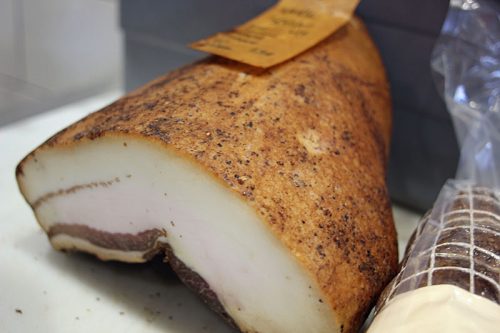
A thick fat cap on charcuterie from a heritage hog at The Butcher and Larder
Interestingly, to me anyway, is that far predating the “other white meat” campaign, pork was used as an alternative to both veal and chicken by many Europeans who could only afford pork. There was even a dish known as “city chicken,” which was made from pork. So it has long been the meat everyone could afford. But it definitely has moved beyond that category now.
Charcuterie also came back as a hobby, which is kind of surprising because offhand, a lot of us would think that hanging meat out unrefrigerated was a good way to kill your whole family. But if you do it right, it works—in fact, I don’t think I’ve ever made a food item that came out as picture perfect as charcuterie.
I think that this is a corollary of the “let’s explore” trend, but with the addition of wanting to know more about how food gets to our tables. If nothing else, trying to make your own charcuterie will definitely lead you to appreciate the skill that goes into making it—and a greater willingness to pay for the effort others have put into it.
The commodity pork business, though, has a lot of problems—it’s a race to the bottom price for farmers, an ecological disaster for pork-producing regions. How are people trying to improve the pork producing system?
The biggest problem, as far as ecological disasters go, is the sudden surge of pig raising in North Carolina. They are trying to replace the income lost from the decline in tobacco purchases. My heart goes out to them, but this is probably not the best place to be raising pigs—as we’ve seen from a couple of hurricanes in the last few years. The pigs are being raised on the flood plains, and as a result, they drown by the thousands when there is a flood, and the lagoons where waste is collected collapse.
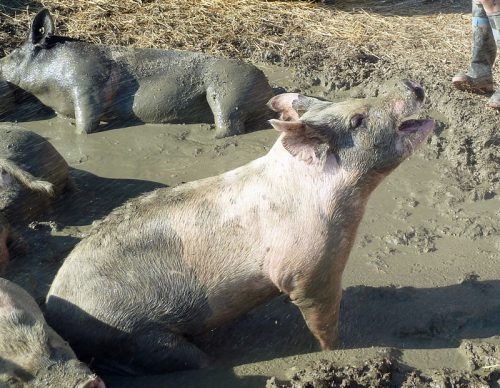
The Midwest, on the other hand, is less environmentally volatile. Plus we have so much open land. The average Midwestern pig farm is 150 miles from the nearest town. That said, there is still a huge amount of effort going into improving the system. The carbon footprint of pig producers in the Midwest has been dramatically reduced in recent decades. Waste management specialists have transformed how waste is handled, reducing pollution and actually using it for everything from fertilizer to energy production.
Of course, there are disagreements among some about the best way to raise pigs. Raising pigs outside seems charming, but the waste then runs into lakes and rivers, ruining the water. Plus, as we saw a few years back with chickens, if something sick wanders in, you lose vast numbers of animals. On one farm I visited, they also mentioned that raccoons, coyotes, hawks, and eagles took a lot of the young, plus there were worries about erosion from rooting. With pigs raised indoors (and bred to be raised indoors), the danger of predators is removed, the incidence of sickness drops, and in some cases, antibiotics are no longer needed, and there is no pollution, as all waste is collected in tanks under the buildings.
Still, the real blessing is that we can do it all: there is great heritage pork being raised in bucolic outdoor settings and safe, affordable pork being raised indoors. Demand is too great to raise it all outdoors—it would destroy the environment completely. But it’s good that it’s an option for some.
Regardless of the options selected, everyone I talked to is still always looking for ways to fine-tune the system, improve the safety factors, improve the lives of the pigs and keep them safe, and make sure the environment is protected. But on the whole, pig production in the Midwest is very much a case of best practices in action.
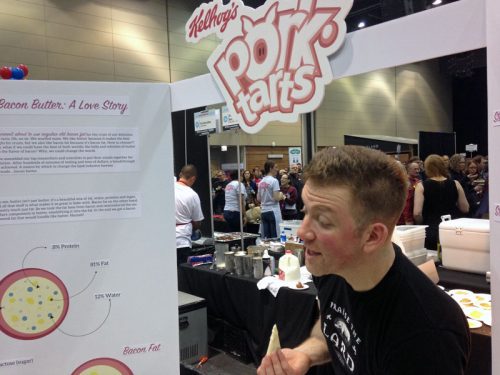
Baconfest, 2016
Michael Gebert works under a sky full of bacon, as editor of Fooditor.
Latest
Join the Discussion
After you comment, click Post. If you're not already logged in you will be asked to log in or register with Disqus.





